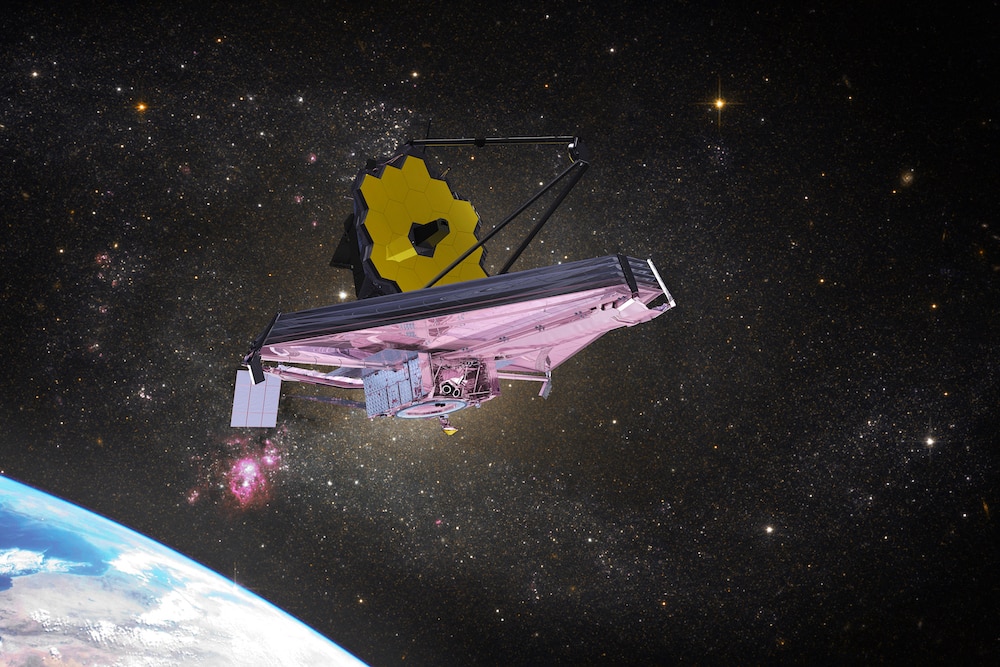Create a free profile to get unlimited access to exclusive videos, sweepstakes, and more!
James Webb Space Telescope will be able to see more strange things that visit us from interstellar space
It can see things up close from really, really far away.

When you gaze up at the sky on a clear night, besides the constellations of myth and legend, what else can you see in that vast expanse of stars? Not much.
Even a backyard telescope will only amplify objects visible to the human eye. Forget that, because even space telescopes like Hubble, despite being able to observe some incredible things, are not able to see with the unreal vision of the James Webb Space Telescope (JWST). Hubble was able to glimpse ‘Oumuamua. If another interstellar object trespasses on the solar system, JWST will not just eye it, but find out at least some of its secrets as if it was up close.
That Webb’s vision is so powerful is an understatement. It has the ability to not only identify and image an object like Borisov or ‘Oumuamua (if one randomly comes around), but look into its chemical composition — which could reveal how it formed, where it comes from, and the conditions in that distant star system. Martin Cordiner, principal investigator of NASA's Webb Target of Opportunity Program, believes we are entering a new era of observation.
“The Webb telescope benefits from extremely sensitive, precision-engineered optics and detectors, optimized for picking up the faintest infrared signals possible,” he told SYFY WIRE. “Previous infrared telescopes were not sensitive enough to detect such faint objects.”
To be sure an object is interstellar, astronomers will need to take astrometric measurements with optical imaging over several nights, pointing out where an object is and how it is moving through space. These measurements will be submitted to the IAU Minor Planet Center and uploaded to a public database for further investigation. The object’s trajectory will give away its orbit. If it has a hyperbolic orbit, or would have had one if it hadn’t run into some sort of intense gravitational influence once it reached the solar system, that means it came from beyond.
It is possible that a monster planet — side-eyeing Jupiter here — or freakish cosmic phenomenon could throw an interstellar object way off. That needs to be determined before a space rock from some other star system whizzes by too fast. Once Webb’s eye is on it, the telescope will use its NIRSPEC (Near-Infrared Spectrograph) and MIRI instruments to see everything it can. Those NIRSPEC mirrors are extremely tough. Made of silicon carbide, they are built to withstand fluctuations in heat. An extremely cold silicon-arsenic detector powers its infrared super-vision.
“The detector is cooled down to -398 F, allowing it to pick up vanishingly small amounts of infrared radiation,” Cordiner said. “The gold-coated NIRSpec grating splits the radiation into thousands of different wavelengths, each of which can be sensitive to a different molecular gas.”
MIRI (Mid-Infrared Instrument) is equipped with a mercury-cadmium-telluride detector even colder than that at -446 degrees Fahrenheit. Floating specks of dust around the object can emit infrared rays low in energy, and MIRI will be able to pick up on those. What these particles are made of could tell us about its origins. Webb’s infrared spectroscopic vision will be able to beam back previously unattainable information on future interstellar objects, such as chemical signatures of ices and minerals, that could tell us more about the thing from outer outer space.
‘Oumuamua and Borisov were too faint for even the most advanced infrared instruments to get a close look at them before they zoomed away. While a mission to ‘Oumuamua might be possible, it will take 26 years to catch up with the strange projectile if it launches in 2028. Whether that mission will ever leave the ground is questionable. Webb may not be able to chase after these objects, but since it is in space, it has the advantage of Earth’s atmosphere staying out of the way. It might be able to tell us all we need to know just by observing them.
“As long as it isn't obscured by too much surrounding dust, Webb will allow us to observe the surface of the object, and obtain its infrared spectrum for comparison with asteroids and other solar system bodies,” said Cordiner.
Whether ‘Oumuamua is a shard of a dead planet or some bizarre alien technology remains unknown, but Webb is prepared for whatever else flies in.


























